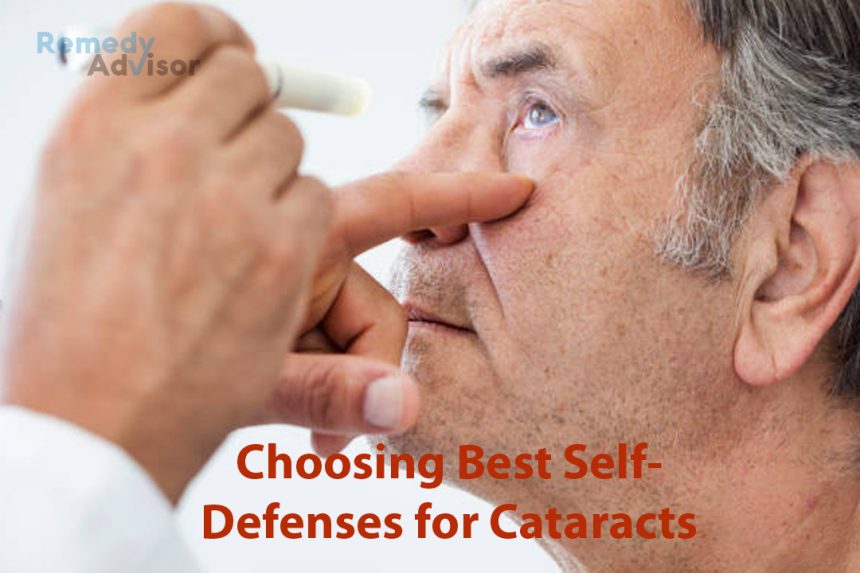Like gray hair and wrinkles, a gradual clouding of the eye’s crystalline lens the transparent light-focusing structure just behind the iris represents a normal part of aging.
While removal of the cloudy lens remains the only cure for cataracts, modern surgical techniques make this operation far simpler and safer than it used to be.
We’ve also learned a great deal about the role that environmental factors play in cataract formation and how to slow the process…
Preventing cataracts
Scientists now know that sunlight and other sources of ultraviolet (UV) light may hasten formation of cataracts not to mention macular degeneration and other potentially blinding eye disorders.
Self-defense: Just as you use sunscreen to protect your skin from sunlight, you should use UV-blocking eyeglasses to limit your eyes’ exposure.
Whenever you venture outdoors in bright sun, wear sunglasses that block UVA and UVB light. Both glass and plastic lenses are okay. There is no advantage to polarized lenses.
If you wear corrective lenses, be sure to choose lenses that screen UV. Other strategies for forestalling development of cataracts include avoiding smoking and limiting your exposure to air pollution.
Inside the body, toxins found in cigarette smoke and air pollution have an oxidizing effect, causing formation of highly corrosive compounds called free radicals. These compounds attack cells, including those in the crystalline lens.
Antioxidants especially vitamins E and C will help limit production of free radicals.
Diabetics are at special risk for cataracts, apparently because of fluctuations in blood sugar levels. These fluctuations cause the lens to swell, which disturbs its delicate metabolism and causes clouding.
If you have diabetes, check your blood glucose levels often and take other measures to keep your blood sugar tightly controlled.
Long-term use of prednisone or another oral corticosteroid prescribed for rheumatoid arthritis, ulcerative colitis, asthma, lupus, etc. causes a steep increase in cataract risk. Ask your doctor about non-steroidal anti-inflammatory drugs (NSAIDs) and other alternatives.
Self-defense: Have your eyes examined every two years if you are under 60 every year if you are older or have diabetes twice a year if you are taking corticosteroids.
When to treat cataracts
The first symptoms of cataracts are often unusual sensitivity to bright light (photophobia) and blurred vision a problem that’s especially noticeable while you’re driving at night.
As lens transparency declines, you may develop nearsightedness (myopia), which makes reading glasses unnecessary. If you’re already myopic, you may need a stronger prescription.
Anyone who experiences symptoms suggestive of cataracts should see an ophthalmologist right away. He/she can give you a stronger eyeglass prescription, if necessary and conduct tests to rule out other causes of vision loss, such as glaucoma and macular degeneration. Without prompt treatment, these eye conditions can lead to blindness.
Good news: As long as eyeglasses can correct your vision to 20/50 or better that’s the point at which vision trouble begins to affect daily activities cataract surgery is generally unnecessary.
Exceptions: Prompt surgery for cataracts is necessary if…
- You drive and your corrected vision falls below 20/40 the legal standard in most states.
- You have chronic eye inflammation.
- Your cataracts threaten to cause glaucoma.
Ultimately, when to have surgery is a personal decision. A passionate reader or stamp collector may want his cataracts removed sooner than someone whose leisure pursuits are hiking or movies.
If a doctor recommends cataract surgery, ask why. Do not agree to surgery unless you are having significant problems with your daily activities or your symptoms are reducing your quality of life.
Surgical options
The treatment of choice for most cataracts is an outpatient procedure known as phacoemulsification. In “phaco,” the surgeon pulverizes the lens with sound waves from a tiny ultrasound probe inserted into the eye.
Phaco requires only one tiny 14-inch incision and no or very few stitches. Healing takes two to three weeks. An older technique extra capsular cataract extraction (ECCE)-requires a K-inch incision that must be closed with up to 10 sutures.
ECCE is also performed on an outpatient basis, but it’s almost always less desirable than phaco because healing can take up to eight weeks.
Exception: ECCE is better than phaco for advanced cataracts, which are too hard to break up with sound waves. Since phaco is usually preferable, be suspicious of any doctor who recommends ECCE.
Both phacoemulsification and ECCE are performed under local anesthesia (injected into the eyelids). Some surgeons now use topical anesthesia, in which anesthetic is delivered to the eye via eye drops.
Cost of surgery: $1,500 to $2,000.
Replacing the lens
Until the 1970s, people who underwent cataract surgery had to wear thick “Coke bottle” lenses afterward to make up for the lost lens. With modern surgery, thick eyeglasses are unnecessary. The surgeon simply replaces the lens with a plastic or silicone intraocular lens prosthesis.
Unlike a natural lens, the prosthesis has a fixed focal length that is, it cannot change shape to accommodate both near and far vision.
In most cases, you must make a choice do you want the lens primarily for reading and other close work or for distance vision?
If you pick near vision, you’ll need ordinary looking (not Coke-bottle) eyeglasses for distance vision and vice versa.
If cataract surgery is to be performed on both eyes, ask the surgeon about placing a near vision lens in one eye and a distance-vision lens in the other. That way, you may avoid the need for eyeglasses entirely.







